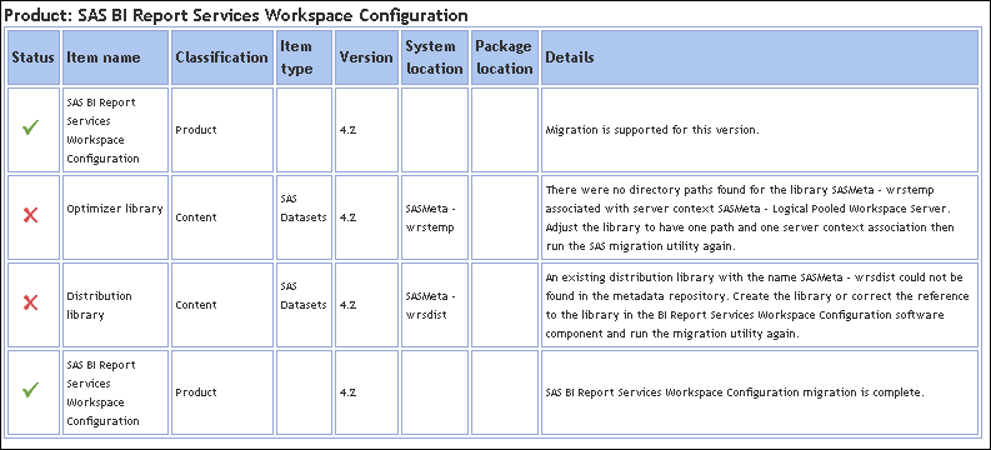Recent updates to SAS 9.4 have introduced some nice improvements in support of automated migration using the SAS Migration Utility and SAS Deployment Wizard. SAS has been working hard to make the migration experience more user friendly and less error prone. Changes have focused on making errors easier to identify and on preventing further difficulties that can be caused by ignoring issues identified by the SAS Migration Utility. If you’re preparing to migrate to SAS 9.4, you’ll want to take a look at some of these useful changes:
Addition of an error count to migration tool
When you run the SAS Migration Utility on your source system to analyze or package the deployment, there are now additional details written to the console about the results of your execution. Included in the new output is a count of any errors that the SAS Migration Utility encountered. This enhancement flags errors immediately instead of relying on the user viewing the analysis report to determine of there are errors.
The error count is listed separately for those encountered during analysis of the source system and those encountered during packaging. In the example below, you can see that two errors were encountered during the analysis of the source environment. The console message refers the user to the analysis report for more details.
Viewing the analysis report will show the details of the two errors that the analysis surfaced. In this case some issues with SAS BI Report Services Workspace Configuration. While reviewing an analysis report, if you are unclear of the implications of an error or warning you can check the notes on the SAS Migration Utility. A link to the website is provided at the top of the analysis report.
Reporting packaging errors separately
The output below is from a packaging run of the SAS Migration Utility on a SAS 9.2 machine which contains the SAS Middle Tier. In this run, the SAS Migration Utility reported an error during the packaging execution phase.
Reviewing the analysis report reveals another new feature. When errors are encountered during the packaging of the source environment, the utility now separates these errors in an execution phase section on the report.
The error message refers the user to a new log that is created. A log file (errors.log) is created when errors occur in the packaging/execution phase. The log is written to the machine directory of the migration package for the tier that is being packaged. The error log is a subset of the full migration log (migrate.log) containing only error messages.
Preventing the use of invalid migration packages
This is all great new functionality that will help SAS administrators identify and address errors and make it easier to create valid migration packages. It has always been recommended that you should have a clean migration package, meaning an analysis report with no errors, prior to running the SAS Deployment Wizard to complete your migration. With SAS 9.4, if you have any errors in your analysis report the SAS Deployment Wizard will now prevent you from using the package. In the SAS Deployment Wizard, if you select a migration package that has errors in the analysis report, the Wizard will now detect that your package has errors and prevent you from continuing with the deployment.
These improvements to the SAS Migration Utility and the SAS Deployment Wizard have made it easier to identify issues during the planning and preparation phase of a migration, and less likely that issues will be ignored, resulting in failures in the deployment phase.






